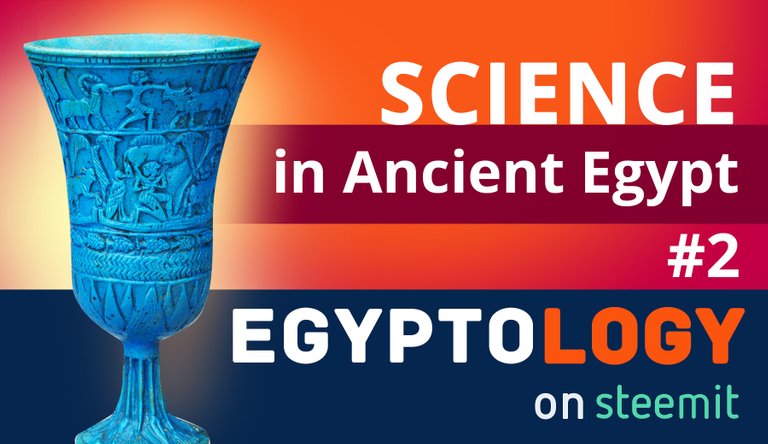
In my previous article about science in Ancient Egypt, I told you some interesting facts about Astronomy and Mathematics in antiquities times. As I promised you, I will now share with you the latest research on other "scientific" areas belonging to the natural sciences. The quotes on "scientific" are intentionally set because I wanna remind you, that the Ancient Egyptians did not do "research" in our modern understanding. They were thinking and acting innovatively in order to solve problems – far more than just for "gaining knowledge". And they did not fix their expertise on papyri and tomb walls to preserve it for following generations. They believed in an afterlife in eternity. That's why they were so keen on writing down in detail what they did - may it be the simple daily life or even complex activities.
We are now the ones that benefit from this and so in this article we'll dig a bit deeper into:
• Geography
• Geology and
• Biology
Geography in Ancient Egypt
What do you think of when you hear "Geography"? Maybe, that modern Geographers of today use GPS tools or other fancy stuff to scale the landscape? Did you know that the institutional Geography was founded quite late in the 19th century by Alexander von Humboldt (1769–1859) and Carl Ritter (1779–1859)? This might be confusing when I am telling you now that the Ancient Egyptian used "Geography" already to fight common challenges in everyday life. The word's origin is from the Greek γεωγραφία and simply means "to describe the earth". But before describing there is observing needed.
And the Egyptians did observe patiently their environment in the tiniest details. For example, they wanted to know everything about the river Nile. Its ebb and flow was a curse and a blessing at the same time. Knowledge of the cycles of the (annual) flooding could decide over life and death. They could protect their harvest, their houses and personal property or even their lives when they knew the timeframes of this strong natural force.
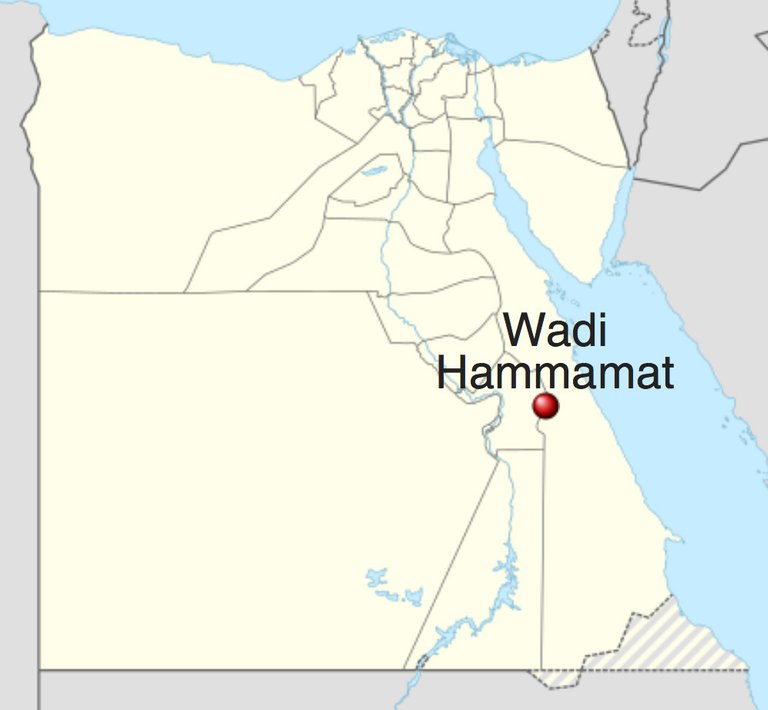
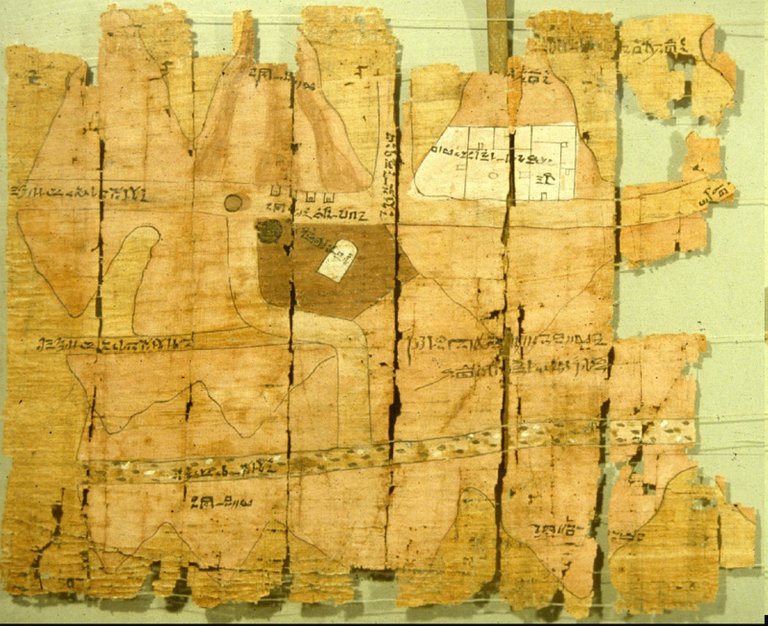
Mining was not the only purpose of expeditions by the Pharaohs like this. Also, military reasons can be the cause for these extended journeys through the Wadis and desert areas. They also explored the geopolitical destinations as well as retreat places to protect themselves.
Geology in Ancient Egypt
Geology also played a big role in Ancient Egypt. In some time periods, the Ancient Egyptians buried their ancestors in rock tombs, like in the Valley of the Kings near Luxor. So they needed to have a profound knowledge of the limestone material. However, it is known that there were some accidents happen by broken tomb ceilings or similar catastrophes caused by a lack of knowledge about statics and stability of the geological environment.
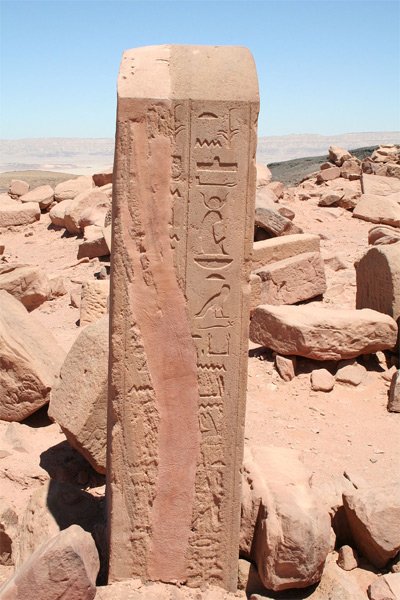
Turquoise, for example, the beautiful green-blue gemstone was seen as the gem of the Goddess Hathor. It was used for jewellery since the predynastic times (around 5500 BCE). Natural turquoise was found especially in the mountains of the Sinai Peninsula. One of the most important ancient mines was Serabit Al-Khadim which had also a temple dedicated to the Goddess Hathor in order to protect the mining activities in this place.
Later the gemstone Turquoise was imitated by a special ceramic made by the Ancient Egyptians: Fayence. This material was made mainly from quartz sand, powdered silica and limestone. The glaze was shining sky-blue and turquoise because of the containing iron oxide and was used to decorate pottery as well as statues and jewellery.
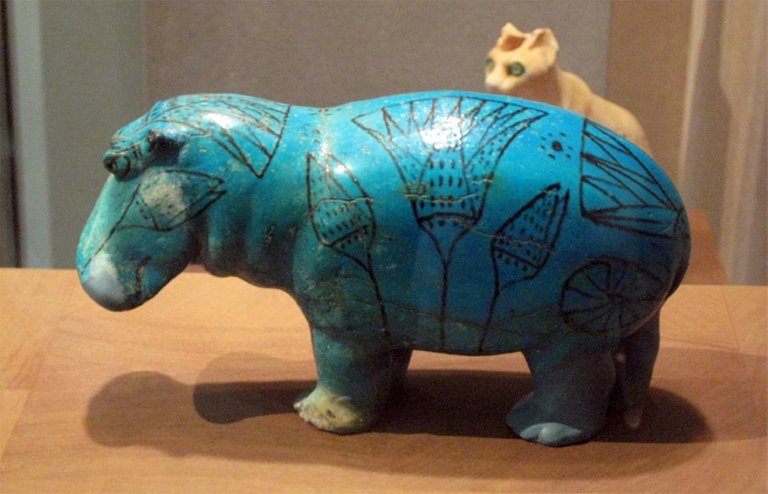

Biology in Ancient Egypt
When it comes to the scientific subject "Biology" we cannot find a direct source of a scientific approach in Ancient Egypt to gain knowledge about "men and nature". We don't know about "experiments" or theoretical mind games. But there is, of course, evidence of a profound knowledge about the natural environment the Ancient Egyptians were living in. These people didn't know about genetically modified crops or anything like that but they knew how to grow grains and other agricultural products in order to gain the best and most effective profit. They knew exactly where to plant and when to plant. So they developed a complex calendar for sowing and harvesting in connection with the annual Nile flood.
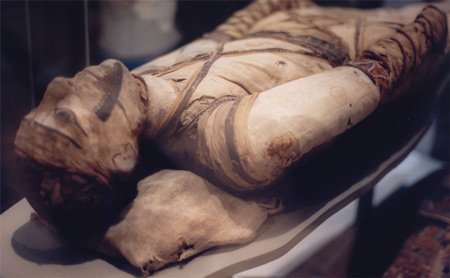
Do you have an idea, why? Was their biological knowledge to small to see the importance of the brain? Or do we misunderstand the Ancient Egyptians in their imagination of a functioning body in the afterlife? Let me know what you think. ;)
More Science in Ancient Egypt
Some of you might think now - where is Physics and Chemistry? Well these subjects will get a special attention in one of the following articles where I will put the emphasis on technology and innovation in Ancient Egypt as the people of this culture were more focused on the practial outcome of their discoveries. I will give you surprising examples of knowledge in this areas of which you probably never thought of.
Sources and further reading:
• Liszka, Kate, Wadi el-Hudi Site 4: a lost amethyst mining settlement, in: Egyptian Archaeology 51, Autumn 2017, 38–39.
• Harrell, J.A. and V.M. Brown, 1992b, The oldest surviving topographical map from ancient Egypt (Turin Papyri 1879, 1899 and 1969), Journal of the American Research Center in Egypt 29 (1992), 81–105.
• Nicholson, Paul T., Egyptian Faience and Glass (= Shire Egyptology. Band 18), Oxford (UK) 1993.
• Giveon, R., The Stones of Sinai speak, Tokyo 1978.
• Rossi, Corinna, Science and Technology: Pharaonic, in: Lloyd, Allan B. (ed.), A Companion to Ancient Egypt, Volume I, Chicester, West Sussex, UK 2010.
• https://en.wikipedia.org/wiki/Turquoise
• https://www.metmuseum.org/blogs/collection-insights/2018/egyptian-turquoise-third-intermediate-period
Image used in the editorial picture by Metmuseum. All other images used are CC BY-SA 3.0. Sources are provided directly below the images.

If you liked this article, please follow me on my blog @laylahsophia. I am a German Egyptologist writing about ancient and contemporary Egypt, history of science, philosophy and life.

The kingdom of Egypt has certainly brought a lot of pioneer innovations to our world. Beautifully written and a great continuation to the prequel :)
Thank you, my friend. :)
That Fayence still looking marvelous today.
I find funny that they considered brains useless :) Maybe it was too much of work to get them out and were not spoiling the body if they stayed inside.
I've heard, not sure how much is it true that they used special hooks to pull out the brains through the nose.
I am a great fan of Fayence. I will cover this in my next article in detail. The colors vary from green to blue in thousand different shades. So fascinating.
Yes, you are right - they had special tools to remove the brain through the nose or through a small hole in the backside of the head (near the neck). Tutankhamun, for example, had this hole in his skull, so the scientists first thought he suffered and died from a injury caused by murder or accident, until they found out that this was the "valve" to suck off the brain... brrrr :D
You received a 10.0% upvote since you are not yet a member of geopolis and wrote in the category of "archaeology".
To read more about us and what we do, click here.
https://steemit.com/geopolis/@geopolis/geopolis-the-community-for-global-sciences-update-4
Thank you very much! :)
Short and concise read! Just about everything civilization started in ancient Egypt. Math, the pyramids, even schooling. I wonder how it was those times.
Thanks Sophia, I'll be here to read next time.
PS: we're namesakes. ; -)
Although I would love to read that "everything" started in Egypt ;), I must be honest and admit - Egypt was not the only highly advanced culture in antiquities that brought innovation to mankind. The many cultures in Mesopotamia (today Irak, Iran and the surrounding countries) were in some areas even more advanced. They invented the wheel, also the rotating potter's wheel, they were the first that even cultivated crops and changed their lifestyle from nomad to settled, founded the first mega cities etc...
Or even look at the meso-american people and their ancient heritage: the pyramids of Teotihuacán, for example.
Well then, pardon my semi-hasty generalization. It so happened that so much about science in history that I've read for the past few months have all had roots in Egypt.
But yeah, I get it. there were also other 'unknown' Civilizations too that were probably as advanced as Egypt. and just because they had only one or two Great thinkers recorded in history doesn't make them irrelevant.
Thanks for clarifying.
Amazing post!
I have always known ancient Egypt to the bedrock of scientific technological breakthrough in the fields of geology, biology and mathematics.
What do you think of the conspiracy theory of the pyramid of Giza not being built by humans, but rather by giants and advanced beings, due to the advanced mathematical calculations and precision employed, which was not available to man at that time?
The problem is - Egyptologists really don't know who else should have built the pyramids if not the Egyptians. Scientifically there is no evidence for "giants", Extraterrestrials or anything like that. But we have sources where the Egyptians depicted themselves cutting and transporting stones for the pyramid. We have no pictures or written sources of something "overnatural". ;)
thanks for a good read :)
Very interesting reading. Thanks for sharing.
Interessanter Beitrag.
Wieder etwas dazu gelernt.
Die Mumifizierungen der Ägypter hat mich schon immer fasziniert.
Schön auch in dem Beitrag wieder davon zu lesen :)
I love the topic of Ancient Egypt. it still baffles my mind that one of mankind's oldest buildings (The Great Pyramid) is at the same time one of the most sophisticated and difficult to replicate. i do not know you position regarding the possibility of the Egyptian civilization being a legacy from a more ancient culture.
You should check the Edwin Smith Papyrus one of the ancient Egyptian medical treatise which demonstrate their anatomical knowledge of the brain ;)